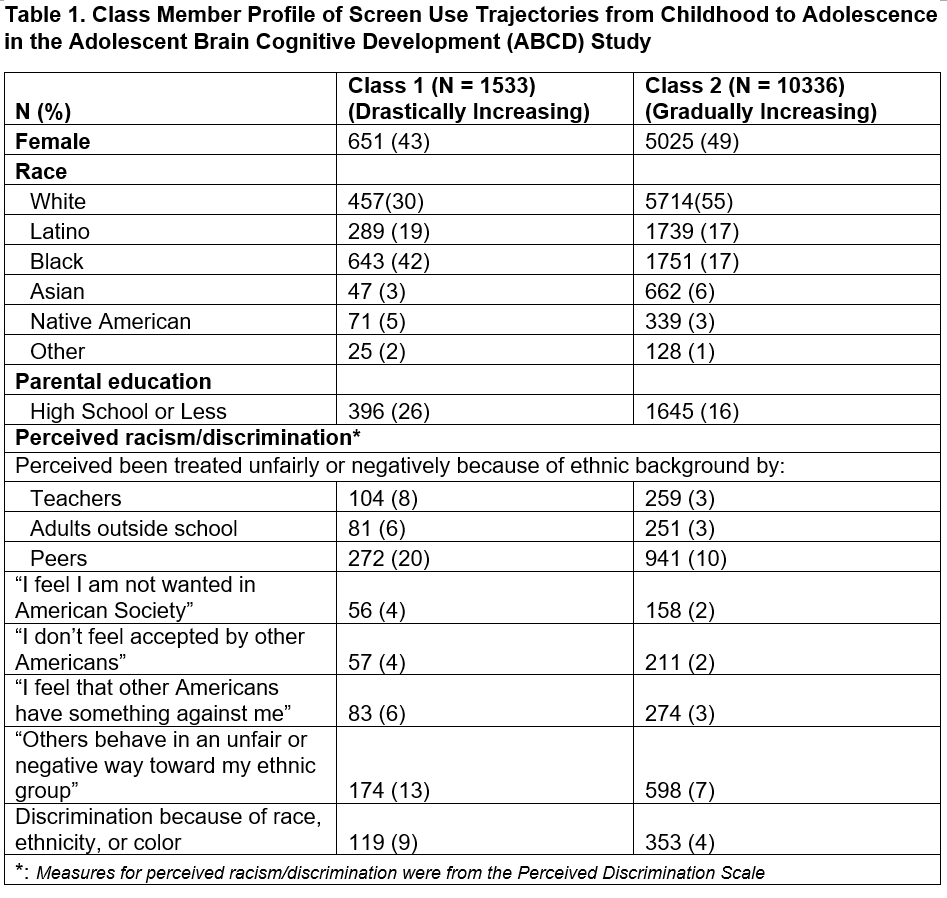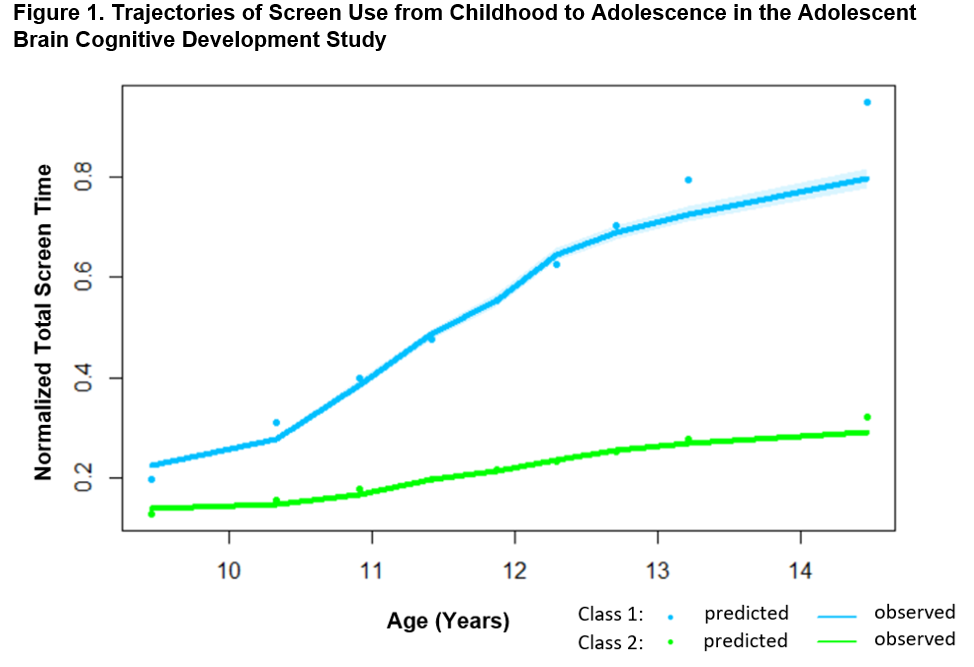Social Media & Technology
Social Media & Technology
621 - Identification and Characterization of Screen Use Trajectories from Childhood to Adolescence
Publication Number: 621.454
.jpg)
Iris Yuefan Shao, PhD, MPH (she/her/hers)
Postdoctoral Fellow
University of California, San Francisco, School of Medicine
Arvarda, Colorado, United States
Presenting Author(s)
Background: Screen use is a known risk factor for adverse physical and mental health outcomes during childhood and adolescence. Moreover, racial/ethnic disparity in adverse screen use persists among adolescents. However, limited studies have characterized longitudinal patterns of screen use from childhood to adolescence.
Objective:
This study will identity and characterize subgroups of adolescents sharing similar trajectories of screen use from late childhood to adolescence.
Design/Methods:
Participants of the Adolescent Brain Cognitive Development (ABCD) Study (2016-2021) who completed the self-reported screen use questionnaire at each wave of the study follow-up were included in the analysis (N = 11869). Average daily recreational screen use was calculated as the sum of six types of screen use (e.g. video gaming, social media use). Growth mixture modeling with standardized total screen use as the outcome and age as a continuous variable was used to identify the optimal number of subgroups of participants with similar trajectories. Subsequently, socio-demographic characteristics, parental educational status, and perceived racism and discrimination during baseline was assessed for each subgroup population. Perceived discrimination was measured using the Perceived Discrimination Scale.
Results:
There were two major distinct subgroups of individuals sharing similar trajectories of screen use from childhood to adolescence: Drastically Increasing (DI) group (N = 1333); Gradually Increasing (GI) group (N= 10336). (Figure 1) Higher proportions of the DI group were racial/ethnic minorities (70%) as compared to the GI group (45%). Moreover, the DI group had higher proportions of individuals reporting perceived racism and discrimination during childhood. (Table 1)
Conclusion(s):
There are two groups of adolescents sharing similar screen use trajectories from late childhood to adolescence. Subgroup populations with a drastically increasing trajectory are more likely to be from disadvantaged backgrounds and to report perceived racism/discrimination during childhood. Behavioral interventions for excessive screen use should consider targeting these disadvantaged populations during childhood. 

